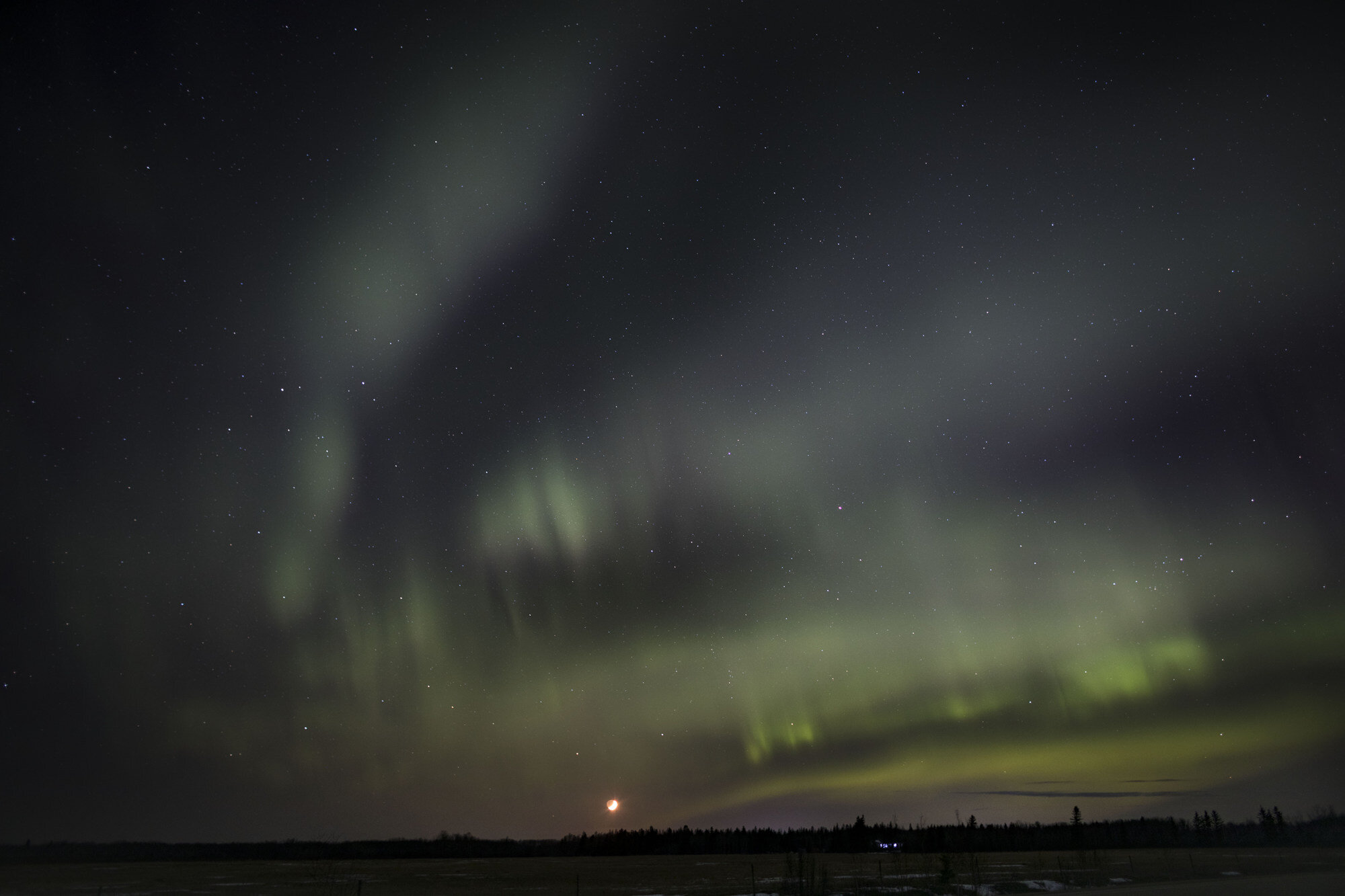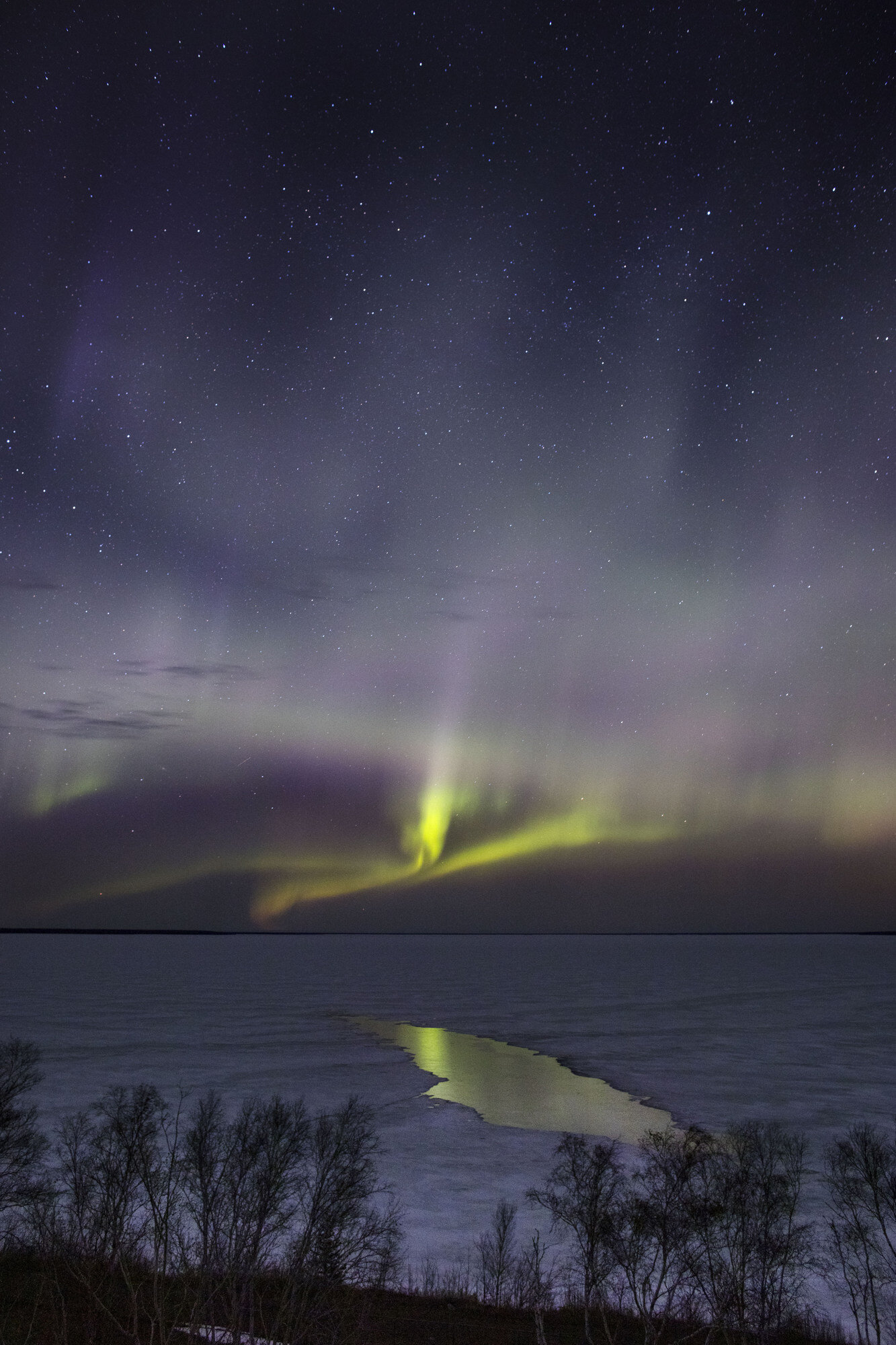This past month has seen a lot of different photography for me, from portraits to street to even wildlife (OK, pelicans), but I’m returning to the topic of Northern Lights because…well, because magic doesn’t happen very often.
And that’s the only way to describe looking up and seeing the sky dance with softly glowing colours, in the kind of soft comforting silence you can only get from true solitude.
The aurora borealis is a result of solar radiation interacting with the Earth’s upper atmosphere — think of what happens to a neon bulb when you run electricity through it — but standing beneath it, it’s hard to reduce it to just that. There are a lot of legends surrounding the Northern Lights — from goddesses ushering in a new day, to dragons battling for good and evil and (most poetically, to me) the First Nations of North America seeing them as echoes of departed people moving and speaking to them in the infinity of the sky.
My latest aurora encounter began after a long day working. From the numbers coming in on solar activity, and an admin on a Facebook group far more versed in crunching the data, it looked like Friday night/Saturday morning would offer very good chances for spotting the Lights. Happily, the clouds and cold of recent days had departed and it looked ideal for trying one’s luck.
With that, I set out around midnight for a 2 hour drive away from the light pollution - and unfortunately increasing crowds - of the city. Several times I stopped by the side of a highway to gaze at the lights which already had made an appearance…I knew I’d made the right decision despite being on Hour 17 without sleep.
Pulling into my destination all weariness and doubt immediately fell away, as how right my choice was dazzled the sky overhead. Far from being confined low to the horizon, these lights were far brighter and covered at least half the sky. Like I said: magic!
Our sun is currently entering into an active phase of its regular cycle, so there’s a good chance these displays will return. My humble advice, if you want to witness them for yourself: approach them reverently and with respect and take the time to let it unfold. Aurora are unpredictable - they may show up early, or not until late into the night, and they may dance for hours, or minutes.
Set aside more time than you originally planned. It’s rare that we get an opportunity to sit in silence, with no demand to ‘do’ something or justify our time. Make the most of it!











